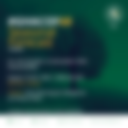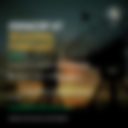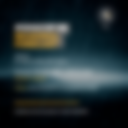Building resilience to water scarcity in the East African drylands
The main goal of the project is to address the multi-faceted challenges of water scarcity and food insecurity under climate change in the Horn of Africa Drylands, by facilitating community-centered adaptation and resilience to climate change impacts. It will use a multidisciplinary, inclusive approach, bringing together local communities, academic experts, novel decision-support tools, multi-level governance structures, regional climate centers, and NGOs.

Our Areas of Work
Our thematic objectives
- Assess the socio-economic dimensions and human dynamics of climate change in the Horn of Africa Drylands including feedbacks between climatic shocks, human behavior, and policy implementation.
- Characterize and quantify historical trends and future projections of climate change, and interactions between water scarcity, food insecurity, population, land use, and the policy environment in Horn of Africa Drylands.
- Develop and enhance multi-level decision-support tools that emphasize the translation of climate information into critical land and water information required for near-term and long-term adaptation and resilience by communities, state/regional governments, NGOs, and humanitarian and development organizations; and
- Strengthen regional climate adaptation and resilience through capacity building, citizen science, information dissemination to improve multi-level decision making, expansion of data networks, and policy implementation.
Enhancing climate services capability
- A new, open-source Climate into Useful Water And Land Information in Drylands (CUWALID) model to quantify soil moisture, groundwater storage, and crop yields at 1-km, driven by variable rainfall and PET.
- Enhancement of existing famine early warning and food security decision support systems (IGAD Food Security and Resilience Analysis Hub; FEWS NET) for the Horn of Africa, which reflect the impacts of water scarcity on food security based on seasonal climate forecasts filtered through the CUWALID model framework.
- Long-term projections of water scarcity/food security in the Horn of Africa Drylands, obtained by driving CUWALID with future climate projections based on IPCC, Paris Climate Agreement, and bespoke climate change scenarios.
- Improved regional and national climate services capacity of key organizations (ICPAC, FAO SWALIM, NGOs) through workshops, technology transfer, model hosting, enhancement of existing decision-support tools and early warning systems, monitoring and response, and rural community input to existing frameworks.
Enhancing adaptation policies and communication
- Regionally varying, gendered characterizations of rural community responses to water scarcity including decision-making methods, thresholds for behavioral change, and barriers/enablers to adaptation.
- An agent-based model (ABM) and an extensive suite of simulated outputs that explore emergent behavior and interactions between climatic stressors, policy implementation, and culturally diverse human behaviors in the Horn of Africa Drylands.
- Historical analysis of socio-economic data, policy implementation, and community experiences of past water scarcity, food insecurity, and land use, emphasizing interactions/feedbacks with climate and hydrology.
- Published national and regional policy positions related to community-centric adaptation and resilience to water scarcity/food insecurity and presentations of them to relevant decision-makers for feedback and dialogue.
- A two-way mobile phone app, WajihaCast, to convey seasonal water scarcity and food insecurity forecasts to end-users, while also allowing citizen science input of water storage observations (e.g., dry wells).
- Enhanced capacity of targeted media practitioners to produce relevant and accurate, culturally sensitive media content, focused on water scarcity, food insecurity, and climatic adaptation by rural communities.
Work Packages
- WP1 – Social dimensions and human dynamics of climate change adaptation and resilience
- WP2 – Historical trends and future projections of climate, water scarcity, food insecurity, and land use
- WP3 – Multi-scale decision-support tools for adaptation and resilience to climate-controlled water scarcity
- WP4 – Regional climate adaptation and resilience through capacity building, informed decisions, and policy
- WP5 – Project management
- WP6 – Project impact through communication and dissemination
Latest News
Latest Updates

Summary for Decision Makers, June to September 2024 Season
Get our June to September (JJAS) 2024 season Summary for Decision Makers, addressing key sectors in…

Technical Statement from the 67th Greater Horn of Africa Climate Outlook Forum (GHACOF67)
The IGAD Climate Prediction and Applications Centre (ICPAC) released the June to September 2024 sea…

Technical Report on the Ongoing Flood Impact in the IGAD Region
The IGAD region is grappling with an unprecedented challenge of a climate emergency within the memb…

Summary for Decision Makers, March to May 2024 Season
Get our latest Summary for Decision Makers, addressing key sectors including:
- Disaster Risk Manageme…









